Acquisition marketing is the process of attracting new customers to your business. It can be done through a variety of marketing channels, including paid search, social media, email marketing, and more.
In this blog post, we discuss acquisition marketing in detail and explain how you can use it to improve customer acquisition for your business and we’re going to back it all up with infographics to help you understand why these strategies are so valuable.
Customer acquisition is a non stop marketing effort that definitely pays off!
Why Is Acquisition Marketing So Important?
While the aim of any marketing activity is to, sooner or later, lead to acquiring customers, focusing on an acquisition strategy is important for many reasons.
Strategies focused on acquisition don’t work too well if they’re too closely tied to awareness. Brand awareness has its place, but it needs to precede acquisition, and putting the cart before the proverbial horse is a good way to underperform in your marketing efforts.
However, at some point, you need to move on from brand awareness and trust that you can get prospects to take the plunge.
That’s where acquisition marketing paradigms kick in.
Customer Acquisition Vs. Customer Optimization
It’s worth noting that, for customer acquisition to reach its full potential, it needs to be followed up by customer optimization.
Although they’re closely related, these activities have different goals and thus employ different strategies.
Generally speaking (and this will vary according to the context), acquisition marketing focuses on acquiring new customers while customer optimization works with existing ones to maximize their potential value for your business.
Below, we break down a variety of customer acquisition strategies so you can see how they permeate every part of your marketing funnel.
Keep in mind – the retention is crucial as well. Repeat purchases spend 33% more on average than new customers.
What Channels Play The Biggest Role in Acquisition Marketing?
There are a number of different marketing channels that can be used in acquisition marketing.
However, some channels play a bigger role than others.
The three most common channels for acquisition marketing are paid advertising, social media, and email marketing.
Paid Advertising In Customer Acquisition
Paid advertising is the process of using paid media to drive traffic to your website or landing page. The most common type of paid advertising is search engine marketing (SEM), which involves paying for ads that appear on search engine results pages (SERPs).
But, a close second is social media marketing, which sees advertisers pay for space on social media platforms.
In a lot of ways, paid advertising is the quintessential acquisition strategy.
You spend money to get your product in front of prospects.
The more money you spend, the more people will see your product.
It’s also the most scalable acquisition strategy.
As long as you spend less to acquire a customer than you earn from them, paid advertising is virtually the goose that lays golden eggs.
However, for practical reasons, it’s not quite that simple.
Sometimes, even if you could continue scaling with paid advertising, it will make more sense to use other acquisition strategies.
Content Marketing For Customer Acquisition
Content marketing is a huge part of the acquisition process.
It’s what keeps people coming back to your site and helps you build an audience over time.
One of the reasons content marketing is so effective in the acquisition process is that it can be shared across multiple channels, including social media, email, and your own website.
The key to a successful content marketing strategy for acquisition is to correctly identify your prospects’ intent.
That is to say, you have to predict someone’s need that your product can help with.
For example:
Suppose you’re a plumber and one of the services you perform most frequently is rescuing lost wedding rings from drains.
You might publish a guide on how to get rings out of drains using tools around the house.
That directly responds to a need that your customers have.
For the guide to turn into sales, all you need to do is include a call to action for readers to call your plumbing business if they want professional help.
New Customer Acquisition Through Email Marketing
Email marketing is also a key driver of customer acquisition.
Although email has been around for a long time, it’s still an extremely effective way to reach prospects and customers alike.
One of the main reasons email works so well for acquisition is that you have direct access to people’s inboxes through email addresses they’ve given you voluntarily.
As long as your emails are relevant and helpful, you can use them to drive traffic back to your website where they might convert into sales by becoming paying customers or subscribers.
And email marketing will continue to grow in the coming years.
We predict it will become the acquisition channel of choice for most brands.
The reason for that bold claim is that privacy concerns are looming ever-greater in the marketing space. As privacy becomes more tightly regulated, zero-party data and owned marketing (such as email) will flourish.
Customer Acquisition Through Social Media
Social media marketing is the process of using social media platforms to drive traffic to your website or landing page.
Now Imagine you built the most functional website, with the best kind of tools and services such as WordPress hosting, for instance. However, whether you want it or not, you still need another channel to drive lots of traffic to it.
The most common way to use social media for acquisition is by creating content that’s shareable and then promoting it through paid advertising and organic reach.
But, you can also use social media as a direct response channel by including links to purchase products or services in your posts and tweets.
One of the advantages of using social media for customer acquisition is that it has a very low barrier to entry. You can start driving traffic to your site with just a few posts per day.
However, because competition for attention is so high on social media, it can be difficult to break through the noise while meeting your customer acquisition cost goals.
As a result, we don’t recommend relying entirely on social media (or any other single marketing channel). Social media can, and should, be a part of your customer acquisition funnel, but its role shouldn’t overtake all other marketing activities.
How To Boost Your Customer Acquisition Efforts
Above, we talked about the primary digital marketing channels we recommend for customer acquisition marketing.
Now, it’s worth pointing out a few ways to improve your customer acquisition strategies across those channels.
Optimize Your Landing Pages
Remember, acquisition marketing is about leading your prospect through the last 10% of the journey. That means creating the perfect environment for a prospect to convert when you get them there.
We could write a library about how to make the perfect landing page, but we’re not sure you’d stick around to read it.
So, instead, we’re going to give you three key things to look out for. Get these right and your job is 80% done.
1. Use a single primary call to action. Don’t clutter your landing page with a lot of options, when your prospect gets there, it’s time to let them convert. Although you shouldn’t take this too literally, there are times when you’re forced to use more than one call to action, just as long as one is clearly distinguishable as the main one.
2. The offer ought to be above the fold. Clearly and plainly state what you’re selling right out of the gates. Don’t mince words when you want to convert customers.
3. Test until you get it right, then test some more. There’s no such thing as a perfect landing page. You should always be in the mindset that it could be better and test new ideas as often as possible.
Choose The Right Marketing Channel For Each Customer
Not all customers are the same. You wouldn’t market a luxury car in the same way as you would market a budget sedan.
The same goes for customer acquisition. You need to choose the marketing channels that will work best for each individual customer.
One way to do this is by using buyer personas, which are a core component of every customer acquisition strategy we develop.
A buyer persona lets you cluster your customers into categories based on their characteristics and purchasing behaviors.
When you know how your customer thinks, it’s much easier to predict what marketing channels they’ll respond to best.
You can use a simple spreadsheet or database tool like Google Sheets to create buyer personas for each of the different types of customers in your target audience. Then, you’ll get an idea of each persona’s customer journey.
Analyze Your Customer Lifetime Value
The customer lifetime value (CLV) is the average amount of revenue a single customer will bring in over the course of their relationship with your brand.
It’s one of the most important metrics to understand when creating an acquisition strategy because it helps determine how much you can afford to spend on acquiring new customers.
If you know the CLV of your average customer, you can use it to calculate how much you should spend on acquisition.
Correctly calculating CLV helps you predict how much time and effort you ought to be spending on each customer while still making a profit.
Invest In Every Step of The Customer Journey
The customer acquisition process isn’t a one-time event. It’s an ongoing process that should be included in every stage of the customer journey.
That means you need to invest in marketing activities like lead nurturing and lead conversion, not just acquisition.
It also means creating a system where you can track each step of the customer journey and note ways in which you can improve it.
Even a simple customer journey could involve several touchpoints and decision events. If you’re ready to reach your prospect at each one of those points, you’ll be top of mind when they make a purchase decision.
Create a Strategy For Your Target Audience
Another important thing to nail down when creating an acquisition strategy is who your target audience is.
You may have a general idea of what types of customers you’re going after, but if you haven’t clearly defined their characteristics and purchasing behaviors yet, it’s time to do so.
The best way to do that is by using the buyer persona process we described earlier.
Don’t think about this in terms of building marketing campaigns for each specific type of customer. Think about how these personas will help you understand which marketing channels are best for reaching them at different points in the funnel.
But knowing who you’re targeting goes beyond just creating a persona.
Clearly defined buyer personas are just the beginning.
Once you’re sure about who you’re targeting, you have to think of ways to talk to that audience correctly.
And by correctly, we mean creating quality content that your potential customers can identify with.
It doesn’t make a difference whether you’re using paid advertising, search optimization, or any other customer acquisition strategy.
If your audience senses that you’re not speaking to them, they’ll immediately lose interest.
Don’t be too concerned about getting this right instantly. Like with landing pages, the key here is to test.
Work on a few ideas at a time, keep what works, and get rid of the rest.
Online advertising and marketing have the advantage of giving us very accurate information about what we’re doing right, but also what we’re doing wrong. Use that to your advantage and never stop testing.
Stay Focused On Customer Acquisition Journey
Remember this: No guru or get rich quick scheme will help you understand the most important part of growth marketing – the customer acquisition performance.
There’s no magical, silver bullet that will shoot you to the top of your brand niche.
Instead, allocate your resources to testing, tracking, and scaling the stuff at work.
Focus on multiple touch points (email, organic social posts, paid ads) where you’ll built your brand identity.
Also, have immense patience. It takes time to make everything click. Don’t get downhearted, as some pitfalls are inevitable.
And, as always, keep scaling.
P.S. For more tips, visit our blog and if you want additional help, you can always get in touch with us.

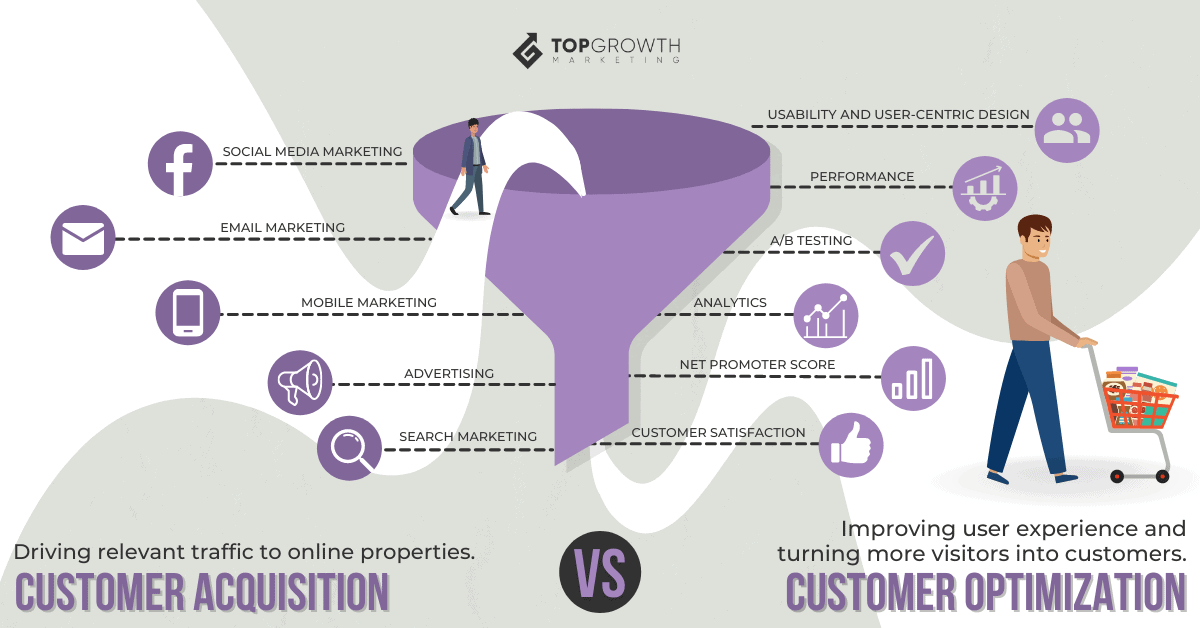
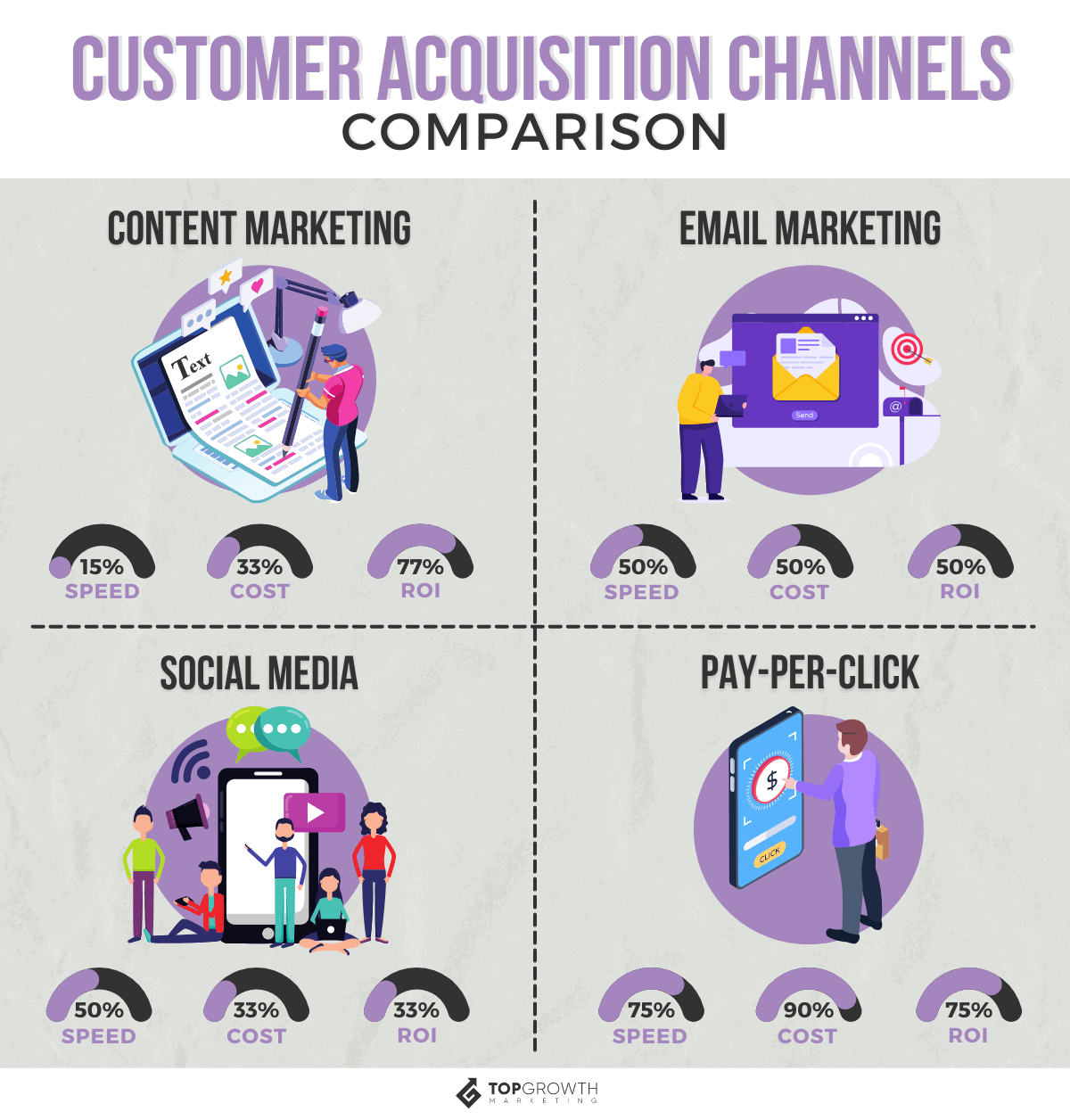

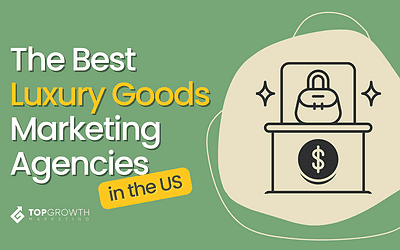

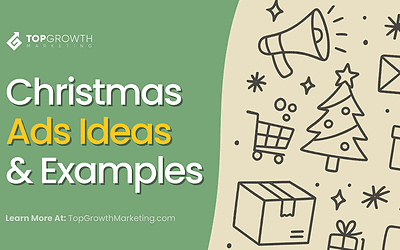
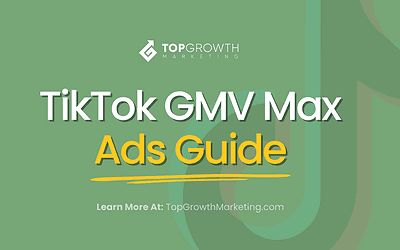
This is the best infographics I could see for the customer acquisition. Thanks for sharing such great insights.
NP, hope it helped!